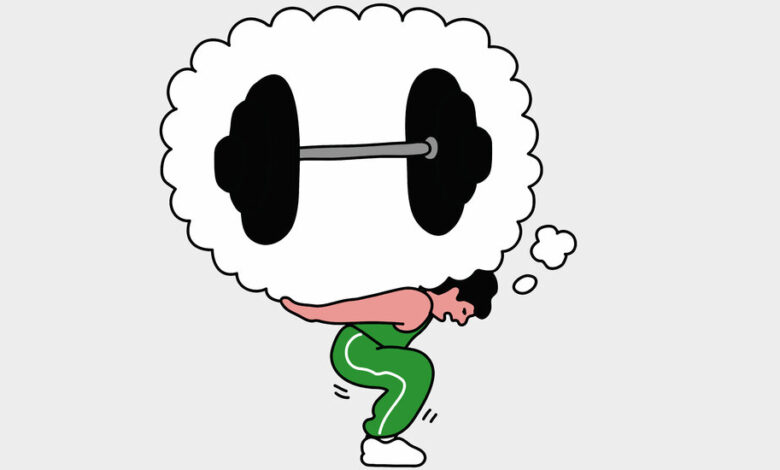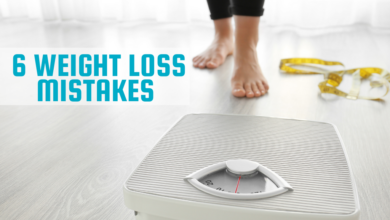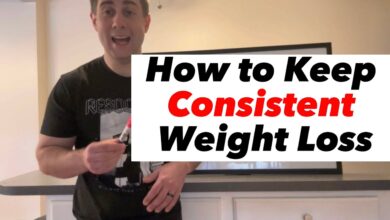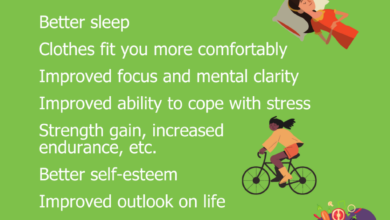
Squash the 10 Most Common Exercise Excuses
The 10 most common exercise excuses squashed – We’ve all been there: staring at the gym membership card, the treadmill collecting dust, the “I’ll start tomorrow” mantra on repeat. But what if we told you that most exercise excuses are just that – excuses? Squash the 10 Most Common Exercise Excuses is about cutting through the noise and tackling the real reasons we hold ourselves back from moving our bodies.
From the illusion of time to the fear of looking silly, we’ll explore the common roadblocks to fitness and offer practical solutions to overcome them. Whether you’re a seasoned athlete or just starting your fitness journey, this guide will empower you to break free from limiting beliefs and embrace the transformative power of exercise.
The Illusion of Time
We all have the same 24 hours in a day, but it often feels like there’s never enough time to squeeze in everything we want to do, especially exercise. The perception of time can be a major obstacle, making even a short workout feel impossible.
However, by understanding the illusion of time and implementing effective strategies, you can reclaim your time and make exercise a regular part of your life.
Strategies for Creating a Realistic Exercise Schedule
Creating a realistic exercise schedule involves understanding your limitations and setting achievable goals. This means recognizing that you may not be able to dedicate hours to exercise every day. Start by scheduling small amounts of time, even if it’s just 10-15 minutes, and gradually increase the duration as you become more comfortable.
- Prioritize Exercise:Treat your workout time as a non-negotiable appointment. Schedule it into your calendar, just like any other important commitment.
- Set Realistic Goals:Don’t overwhelm yourself with ambitious goals. Start with a few sessions per week and gradually increase the frequency and intensity as you progress.
- Break It Down:Divide your exercise into smaller, manageable chunks throughout the day. For example, instead of aiming for a 60-minute workout, do three 20-minute sessions.
- Be Flexible:Life is unpredictable. If your schedule changes, adjust your workout accordingly. Don’t let a missed workout derail your entire plan.
Incorporating Movement into Daily Routines
You don’t need to spend hours at the gym to reap the benefits of exercise. Small amounts of movement throughout the day can significantly impact your overall health and fitness.
- Take the Stairs:Instead of taking the elevator, opt for the stairs whenever possible. Even a few flights can provide a mini workout.
- Walk During Breaks:Get up and move around during your work breaks or during commercial breaks while watching TV. A brisk walk can boost energy levels and reduce stress.
- Park Farther Away:When you’re going to the grocery store or running errands, park farther away from the entrance and walk the extra distance.
- Do Household Chores:Turn your chores into a workout. Vacuuming, mopping, and gardening can all be surprisingly effective forms of exercise.
The Fear of Looking Silly: The 10 Most Common Exercise Excuses Squashed
It’s a common feeling – the fear of looking silly when starting an exercise routine. We worry about being judged, feeling awkward, or not knowing what we’re doing. But the potential benefits of exercise far outweigh any discomfort from self-consciousness.
Think about it – would you rather feel slightly embarrassed for a few minutes while you’re working out, or regret not taking care of your health later?
Finding Supportive Environments
It’s important to find a way to exercise that feels comfortable and supportive. Here are some options:
- Exercise at home:There are countless online workout videos and apps that allow you to exercise in the privacy of your own home. This can be a great option for those who are new to exercise or feel self-conscious about working out in public.
Let’s face it, we all have those days when the couch looks way more appealing than the gym. But, remember, those excuses are just that – excuses! Once you conquer the mental hurdle, you’ll be surprised how easy it is to get moving.
And if you’re looking for healthy fuel to power those workouts, check out these diets and recipes for meal-worthy salads – they’re packed with nutrients and flavor, making healthy eating a breeze. Now, back to crushing those excuses and reaching your fitness goals!
- Join a gym with a supportive atmosphere:Many gyms offer group fitness classes and personal training sessions. Look for gyms that prioritize a welcoming and inclusive environment.
- Find a workout buddy:Having a friend to exercise with can help you stay motivated and accountable, and it can also make the experience more enjoyable. You can both support each other and laugh off any awkward moments.
Types of Fitness Classes and Their Benefits
There are a variety of fitness classes available, each with its own unique benefits. Here’s a table outlining some popular options:
| Class Type | Benefits |
|---|---|
| Yoga | Increased flexibility, improved balance, stress reduction, and mindfulness |
| Spin | Cardiovascular fitness, muscle endurance, and calorie burning |
| Zumba | Cardiovascular fitness, calorie burning, and mood improvement |
| Pilates | Core strength, flexibility, and injury prevention |
| Bootcamp | High-intensity interval training (HIIT), muscle building, and calorie burning |
The “It’s Too Difficult” Mindset
It’s easy to feel overwhelmed by the thought of starting an exercise routine, especially if you’re new to it. You might think, “I’m not strong enough,” or “I’ll never be able to keep up.” But the truth is, exercise doesn’t have to be a grueling, impossible task.
It can be a gradual journey of progress, and with the right approach, you can build your fitness level step by step.
Progressive Overload, The 10 most common exercise excuses squashed
Progressive overload is a fundamental principle of exercise that involves gradually increasing the demands placed on your body over time. This could mean increasing the weight you lift, the number of repetitions you perform, or the duration of your workouts.
By consistently challenging your muscles, you force them to adapt and grow stronger.
“Progressive overload is the gradual increase of stress placed upon the body during exercise training. It is a key principle of exercise physiology and is essential for achieving fitness goals.”
American Council on Exercise
Visual Representation of Progressive Overload
Imagine a staircase representing your fitness journey. Each step represents a new level of intensity, whether it’s adding a few more pounds to your weights, extending your run by a block, or increasing the incline on your treadmill. As you climb each step, your body adapts and gets stronger.
Over time, you can gradually increase the difficulty of your workouts, moving up the staircase at your own pace.
Finding an Enjoyable and Challenging Routine
It’s important to find an exercise routine that you enjoy, as this will make it more likely that you’ll stick with it. Here are some tips for finding an enjoyable and challenging routine:
- Experiment with different activities:Try out various types of exercise, such as running, swimming, cycling, dancing, or team sports. You might discover something you love that you never considered before.
- Find an exercise buddy:Having a friend to exercise with can provide motivation and accountability. It can also make workouts more fun and social.
- Set realistic goals:Don’t try to do too much too soon. Start with small, achievable goals and gradually increase the intensity and duration of your workouts as you get stronger.
- Listen to your body:Pay attention to how your body feels during and after workouts. If you’re feeling pain, stop and rest. It’s better to take a break than to risk injury.
- Reward yourself:Celebrate your progress by rewarding yourself with something you enjoy, like a new workout outfit or a healthy meal.
The “I’m Not Motivated” Excuse
It’s easy to say you’re not motivated to exercise, but the truth is, motivation is often a product of our choices and environment. When we lack motivation, it’s usually because we haven’t found a way to make exercise enjoyable or haven’t created the right conditions for success.
Setting Realistic Goals and Finding Enjoyable Activities
To overcome the lack of motivation, start by setting realistic goals. Don’t try to overhaul your entire lifestyle overnight. Instead, focus on small, achievable steps. For example, instead of aiming for a daily hour-long workout, start with a 15-minute walk three times a week.
Finding an exercise routine that aligns with your personal interests is crucial. If you hate running, don’t force yourself to do it! Explore other activities like swimming, dancing, hiking, or team sports. The key is to find something you genuinely enjoy, as this will make it more likely that you’ll stick with it.
Creating a Supportive Environment
A supportive environment can significantly boost your motivation. Surround yourself with people who encourage your fitness goals. Consider joining a gym or fitness class, where you can connect with others who share your interests. You can also seek out online communities or social media groups focused on fitness.
“We are the average of the five people we spend the most time with.”
Jim Rohn
Building Intrinsic Motivation
Intrinsic motivation comes from within, and it’s often more sustainable than external motivation. To cultivate intrinsic motivation, focus on the benefits of exercise beyond weight loss. Exercise can improve your mood, reduce stress, boost energy levels, and enhance sleep quality.
Remember, the key to building intrinsic motivation is to connect with the positive outcomes of exercise.
Making Exercise a Habit
Consistency is key when it comes to exercise. The more you exercise, the more likely you are to make it a habit. Start by scheduling regular workout times in your calendar and treat them as non-negotiable appointments.
We’ve all been there, with those pesky excuses that keep us from hitting the gym. But let’s face it, “I don’t have time” or “I’m too tired” are just excuses. If you’re looking for a way to overcome those barriers and truly commit to a stronger you, then check out this essential guide to strength training.
It’s packed with practical tips and strategies that can help you build a solid foundation for a healthier, more active lifestyle. So ditch those excuses and get ready to smash those fitness goals!
“The key is not to prioritize what’s on your schedule, but to schedule your priorities.”
Stephen Covey
You can also use strategies like setting reminders, tracking your progress, and rewarding yourself for reaching milestones to reinforce your commitment to exercise.
So you’ve finally conquered those 10 common exercise excuses, but now you’re ready to tackle your nutrition. That’s where a registered dietitian comes in, and you might be surprised by what they can do! I recently read an article about 3 surprising takeaways about being a registered dietitian that really opened my eyes to the profession.
Now that you’re moving your body, let’s get those healthy habits flowing and make sure you’re fueling your workouts the right way!
The “I Don’t Have Time” Myth
We all have busy lives, and it can feel impossible to squeeze in exercise when you’re juggling work, family, and other commitments. But the truth is, even a little bit of exercise can make a big difference in your health and well-being.
It’s not about finding hours to dedicate to the gym; it’s about incorporating short bursts of activity into your daily routine.
Finding Time for Exercise in a Busy Schedule
It’s about prioritizing your health and finding ways to make exercise a non-negotiable part of your day. Here are some tips for making exercise a priority:
- Schedule it in.Treat exercise like any other important appointment. Block out time in your calendar and stick to it. Even if it’s just for 15 minutes a day, consistency is key.
- Make it convenient.Choose activities you can do close to home or work, or that you can fit into your existing routine. For example, take the stairs instead of the elevator, walk or bike to work, or do a quick workout during your lunch break.
- Break it up.Don’t feel like you need to do a full hour of exercise at once. You can break it up into shorter intervals throughout the day. For example, you could do 10 minutes of cardio in the morning, 10 minutes at lunch, and 10 minutes in the evening.
Finding Time for Exercise With Limited Time
Even if you have limited time, there are still ways to get a good workout. Here are a few ideas:
- Try high-intensity interval training (HIIT).HIIT workouts involve short bursts of intense exercise followed by brief recovery periods. This type of training can be very effective for burning calories and improving cardiovascular fitness in a short amount of time. A 10-minute HIIT workout can be just as effective as a 30-minute moderate-intensity workout.
- Use your commute.If you have a long commute, use it as an opportunity to get some exercise. You can walk, bike, or run part of the way. Even if you take public transportation, you can get off a stop early and walk the rest of the way.
- Incorporate exercise into your daily activities.You can get a good workout just by making small changes to your daily routine. For example, you can walk or bike to the grocery store, take the stairs instead of the elevator, or do some stretches while you’re watching TV.
Conclusive Thoughts

Remember, the journey to a healthier, happier you starts with one step – or, in this case, one workout. By challenging the excuses and embracing the benefits, you’ll discover that movement is not just about physical fitness, but about mental clarity, emotional well-being, and a deeper connection with your body.
So, ditch the excuses, lace up your shoes, and get ready to experience the incredible transformation that comes with moving your body.






